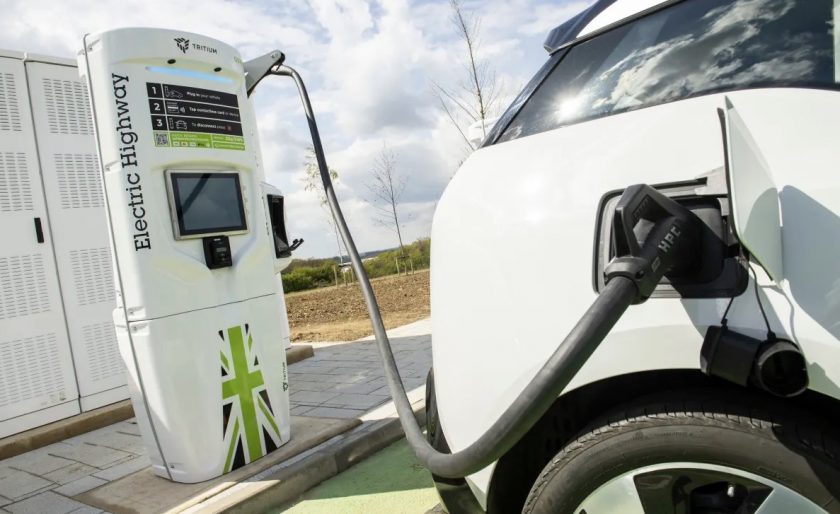Welsh Government sets out plans to ensure number of EV charging points meet increasing demand

The Welsh Government has set out its Electric Vehicle Charging Plan setting outs how it aims to invest in infrastructure and working with the private sector to give people in Wales “the confidence to make the switch to electric vehicles”.
The Welsh Government wants rapid electric vehicle charging points every 20 miles along strategic trunk roads such as the (87 mile long) A55 through North Wales by 2025.
The vision is by 2025, all users of electric cars and vans in Wales are confident that they can access electric vehicle charging infrastructure when and where they need it.
Currently in Flintshire, there are around 400 electric or plug-in hybrid vehicles registered in the county and just 30 public charging points and 12 rapid charge points according to data released by money.co.uk.
Across all Wales there are 1,000 public charging points across, one for every six battery electric vehicles.
| Location | EVs | All Registered Cars |
ULEV % | Total public charging devices |
Total public rapid charging devices |
Charge points per 100 EVs |
Rapid Chargers per 100 EVs |
| Isle of Anglesey | 193 | 38,800 | 0.50% | 54 | 4 | 28.0 | 2.1 |
| Gwynedd | 289 | 59,400 | 0.49% | 73 | 3 | 25.3 | 1.0 |
| Wrexham | 300 | 69,400 | 0.43% | 30 | 6 | 10.0 | 2.0 |
| Conwy | 341 | 61,300 | 0.56% | 34 | 4 | 10.0 | 1.2 |
| Denbighshire | 261 | 50,300 | 0.52% | 19 | 8 | 7.3 | 3.1 |
| Flintshire | 400 | 87,300 | 0.46% | 30 | 12 | 7.5 | 3.0 |
The new plans set out an approach to ensure that the number of charging points continue to grow to meet increasing demand as fossil fuel vehicles are phased out.
The EV Charging Action Plan also sets out how the Welsh Government will be working with the private sector, with the aim of delivering a charging point facility for every 20 miles of the strategic trunk network across Wales by 2025, providing further reassurance to electric vehicle drivers.
With transport generating around 17% of all carbon emissions in Wales, improving electric vehicle infrastructure is just one step that the Welsh Government is taking to reduce the impact transport is having on both the environment and our health.
Llwybr Newydd, the Welsh Government’s transport strategy sets out how we will shape our transport system in Wales over the next 20 years encouraging more people out of cars and using public transport, walking or cycling.
Deputy Minister for Climate Change, with a responsibility for transport, Lee Waters said:
“We need to do more in the next ten years than we’ve done in the last thirty if we’re to reach our NetZero target by 2050.”
“Changing the car dependency culture that has been created in the past and encouraging more people to use public transport will be key, but for those essential car journeys, making the switch to an electric vehicle is another way we can make a difference.”
“The plan I’ve published today sets out the action we will be taking to deliver high quality electric vehicle infrastructure across Wales.”
“Working with the private sector we have ambitious plans in place to increase the number of charging points across the country, so drivers feel confident to make the switch as demand for electric vehicles increases.”
The Welsh Government’s Ultra Low Emissions Vehicle (ULEV) Transformation Fund has already provided a kick-start for many EV projects across Wales.
The next round of ULEV funding will open for bids in December 2021.
The fund will help local authorities deliver more than 300 publicly accessible fast and rapid charging points across Wales this financial year.
There are also plans in place to increase both public and private sector delivery in line with the Welsh Government’s strategy in future years.
[Photo: ecotricity.co.uk]
*Data on registered vehicles by local authority, registered ULEVs by local authority, public charging points and public rapid charging points were taken from publicly available sources.
- Registered Vehicles – Department for Transport: The number of cars registered by local authority
- Registered ULEVs – Department for Transport: The number of ULEVs registered by local authority)
- Public Charging Points – Via Department for Transport
Data includes both privately owned and company-owned vehicles and vehicles allocated to local authority by postcode of registered keeper. Figures may include large electric fleets registered to business owners.
Spotted something? Got a story? Email: [email protected]
Latest News
